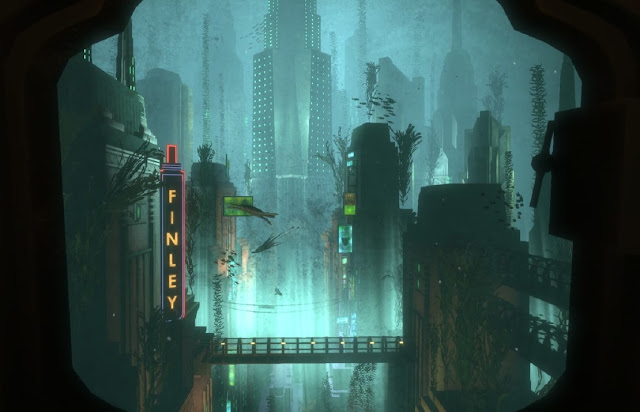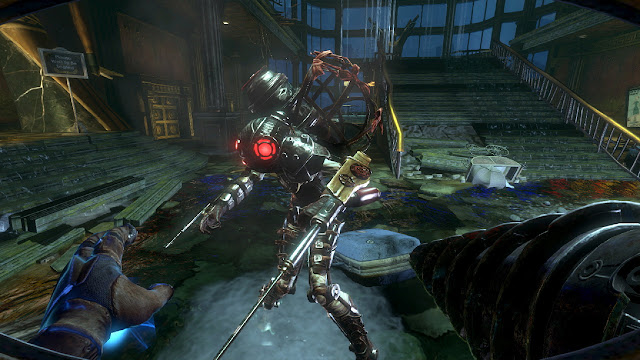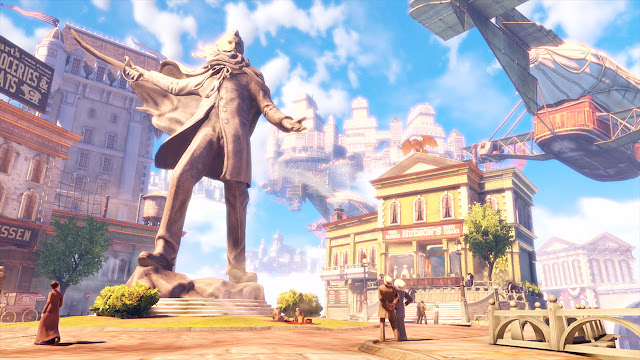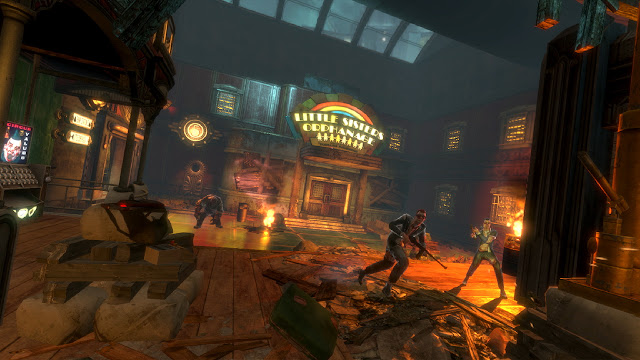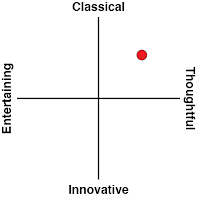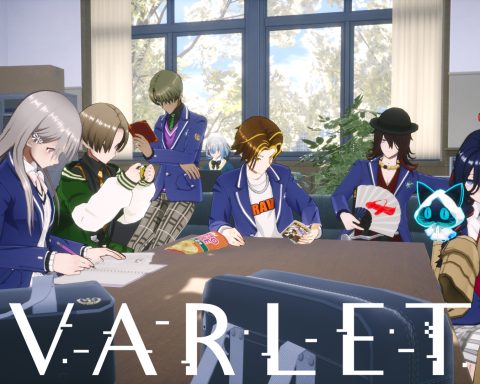Review by Harvard L.
I love how far the gaming medium has come in such a short amount of time. BioShock, BioShock 2 and BioShock Infinite are, amazingly, retro games now. And maybe that’s more a statement about how quickly time has passed rather than how robust the ideas within these three games are, but revisiting BioShock feels almost quaint. We’ve never quite stopped talking about it – not as players, not as critics, not as developers. The series as a whole (or at least more accurately 1 and 3) have laid so much groundwork for the way we conceive games. As I’ll come to argue in a later thinkpiece, all roads lead to BioShock. So given that these are significant titles, are they worth your while on the Switch?
The Switch ports are scaled-down versions of the recent PS4 and Xbox One remasters of the BioShock Collection, which have been tidied up to run on Switch. Saving the idea of playing on a laptop, this is the first time the series has been truly portable – now in 2020, you can fight the evils of objectivism while riding a train or save a young woman from a terrifying robot-bird from the comfort of your bed. They’re not exactly games which I needed to have on-the-go, but for posterity’s sake, it’s good that games as significant as these are available everywhere.
BioShock 1 has arguably aged the best out of the whole trilogy. Released in 2007 for PC and Xbox 360, Irrational Games’ first foray into the ideology-themed retro-futuristic shooter holds a special place in my heart. It was one of the first MA games I’d ever played. One of the first times a game actually made me jump in fright. Returning back to the underwater city of Rapture in 2020 feels chillingly relevant – the civil war between the upper-class demagogues and lower-class opportunists which destroyed what should have been a utopia, feels better reflected in today’s context of billionaires flashing their influence on Twitter and espousing their admiration for Ayn Rand. The game is a heart-pounding adventure set after Rapture has completely collapsed – people have turned themselves into monsters from excessive DNA splicing, and the protagonist has little context of why you’re there or what you want to do, other than a disembodied voice named Atlas who’s constantly in your ear. If you’d not touched this game since it came out, it’s definitely worth another whirl. And if you’ve never tried it before and somehow avoided spoiling the major plot events, then you’re in for a treat.
On the Switch, BioShock runs as well as you’d expect an almost 15-year-old game to run. There are no technical issues to speak of, the graphics look excellent both in docked and handheld mode, and even the battery consumption is reasonable. The jaw-dropping intro cutscene showing the underwater city in all its glory is just as impactful on the small screen as it was on PC, as are the later moments. The setting, the vision and the premise are certainly something special – the underwater city and its multiple boroughs, the bold art-deco design, the creepily innocent Little Sisters who scavenge the bloodied halls in search of genetic material, and their hulking, amoral protectors the Big Daddies – we haven’t seen science fiction quite like this in gaming, both before and after BioShock’s release.
What hasn’t aged quite as well however is the moment-to-moment gameplay. BioShock was designed as somewhat of an jack-of-all-trades – it’s not an RPG, but it bears certain role-playing mechanics from its pedigree as Ken Levine’s spiritual successor to System Shock 2, and other immersive sims like Deus Ex or Ultima Underworld. Whereas the former allowed full exploration and open-ended problem solving, BioShock is both more linear and more prescriptive in the way it handles its adventure. The best course of action is, naturally, shooting your enemies. There are also the Plasmids – science-fantasy themed powerups fired with the left hand which causes elemental or environmental based damage, as well as certain additional mechanics such as hacking turrets or pulling Splicer to fight Big Daddies, which allow the player to divulge a little creativity in the way they want to inflict murder upon their enemies. One thing lacking in BioShock compared to other immersive sims is the option for any sort of nonviolent approach; rather, BioShock is more violent than most games in the public eye – both in a gore sense as well as a violence-is-the-only-way-forward sense. Even if it is contextualised, it’s something to keep in mind for those who have not played this before.
One thing I noticed while playing the original BioShock on the Switch though is just how PC-centric the design feels. This is a game which was made to be played on the computer, and controlling Jack through the hallways of rapture on joysticks feels like a lesser experience than keyboard/mouse. For one, there’s a lot of right-angle and hairpin turns, a lot of open environments and enemies which pop up behind you. Without a quick-turn button, aiming and looking around feels just a little frustrating. It’s made worse by, at the time of writing, the lack of gyroscope aiming support – in other Switch ports like Metro 2033, the ability to make small aiming adjustments with motion controls and bigger turns with the right stick alleviate this problem entirely. But with all three BioShock games, aiming never quite feels natural because of the level design, though it does get better as the series goes on.
There’s also a lot of little annoyances in BioShock – the ever-present hacking minigame which requires connecting pipes on a grid was clearly designed for computer mice; it’s laggy where the rest of the game is fine. There’s no touch screen support either, even where it would have made sense to include. The original BioShock has a real button mapping problem on controllers – Left shoulder and Left trigger select and fire plasmids, Right shoulder and Right trigger select and fire guns, there are separate face buttons for jumping, interacting, reloading and using medkits. The face buttons are required for selecting different ammo types. This means there’s no button to use an EVE Hypo (a mana potion) and the animation instead triggers automatically when the player tries using a plasmid without EVE, often ruining the flow of combat. The first game also doesn’t use the Switch’s HD Rumble to its fullest effect, it seems to be programmed as BUZZ or NO BUZZ – which is irksome when firing, say, the machine gun, and the controllers are set to BUZZ the entire time. I quickly turned my rumble off because of this.
The first BioShock is also, arguably, the most narrative-heavy, lore-rich and thematically complete of the three games. I’ll do a think-piece about the way those themes are represented since I have my criticisms but it’s far more subjective, and it didn’t quite make sense to factor into the review score. It also means I get to keep this review spoiler free, as we move onto…
BioShock 2! It’s very hard to say the title of this game with excitement; it’s very much the mediocre, forgotten entry in this trilogy. BioShock 2 again takes place in Rapture, and fills in some lore and narrative that was missing in the first game. For all its effective world-building, the first BioShock was an extremely self-enclosed story, and even though they managed to reveal most of the key players, there were lots of unanswered questions about exactly how the world of Rapture functioned and treated its various echelons of society.
BioShock 2 sheds light into this – the player takes the role of Subject Delta, a prototype Big Daddy who just wants to be reunited with his Little Sister. Players get to mess around with the classic Big Daddy weapons – a powerful arm-mounted drill, the formidable rivet gun, and… most of the Plasmids which you’ll already be familiar with from Bioshock 1. Yes, unfortunately the gameplay in the sequel isn’t overtly different; although the character is heavier and the motivations different, ultimately it’s still a shooter with all the trappings of the genre.
What has been changed in BioShock 2 is the scope of the narrative; the second game takes the player more deeply into the working-class areas of Rapture, exploring the lives of the people who were first hired to build the arrogant underwater city and then were disenfranchised the second the higher-ups realised they were no longer needed. BioShock 2 explores (that is, argues against) the philosophy of extreme collectivism, creating a villain out of a character who wants to make everyone so equal that identity and free will become meaningless.
It’s different enough to feel fresh but samey enough to just feel like more of BioShock 1; there are a few steps forward and a few steps back. The rumble is somehow even worse here; in BioShock 2 you get the chance to actually go outside the city’s pressurised interiors and walk on the ocean floor. Landing on the seabed in your heavy diving-suit-boots is, unfortunately, very BUZZY. The hacking minigame is a bit better though, simply requiring a quick timing check rather than the pipeline frustration of the first game. The gunplay is familiar, no additional amount of Big Daddy powers can hide the fact that the underlying mechanics are the same, but exploration has been dialled back to make way for protect-the-little-sister escort segments. They’re emotionally resonant though and control better than the constant-180-turn-paranoia of the first game, so I let it slide. We also start to see more suspension of disbelief here; you’ll be wondering why the splicers of Rapture have all suddenly started carrying rivets around to fuel your gun.
Once everyone had their fill of Rapture however, Ken Levine had one last grand vision for a BioShock title (having not had much involvement in 2K Marin’s development of the sequel). Now back in the good hands of Irrational Games, BioShock Infinite explores the concept of American Exceptionalism in an alternate 1920’s where an opportunistic religious zealot named Comstock decided to secede from the Union by going not South, but… up.
BioShock Infinite’s themes are far more extreme and less subtle than the original two games (which were not particularly subtle to begin with). Players take the role of Booker Dewitt, a surprisingly non-mute protagonist who is tasked of heading to the flying city of Columbia to find and protect a young woman, Elizabeth. Meanwhile, Comstock brands Dewitt as a false prophet and commands just about every single public servant at him to kill or be killed in return. BioShock Infinite is a bigger, louder, more colourful, more outlandish, more violent shooter than the first two games ever were, and yet does occasionally feel like lesser, too.
In terms of gameplay, BioShock Infinite is a shooter and only a shooter; it’s not even pretending to be an RPG anymore. This is great for controls mapping; now that the player only has two ranged weapons at a time and never needs to hack anything, everything just feels more intuitive. There’s a dedicated melee button now instead of having to drop the gun in favour of the wrench. There are no health kits to speak of, everything is found in the game world; encounters take place in dynamic open arenas rather than the first two games’ cramped corridors. Everything is overall more fluid, less fiddly. There are also no breaks from the gun-toting action to connect some pipes or perfectly time a pressure gauge. And for some that could be argued as a strength, for others it’s a weakness. I personally didn’t like Infinite quite as much for this – I’ll argue this in more depth in the critique, but cutting down every gameplay interaction except for the shooting meant that the player is rarely experiencing Columbia; they are just pointing a gun at various people while incidentally being in Columbia.
The Infinite Switch port is however, by far the best out of the three. Graphics have translated well from the original 2013 game to the 2020 port; while it’s noticeable that many 3D objects have been simplified, this isn’t really a game about looking at objects in close-up. When the player is rocketing between buildings on the skyhook, the relative speed will make anything look good. The Rumble is also finally fixed in this game; the shakes are subtle and not painful, and there are additionally some nice touches such as the rhythmic clunk-clunk when the player is riding a sky-line, which nicely adds to the immersion.
All three BioShock games in the collection contain all the DLC from their original releases and as far as packages go, are as complete as they come. Purely from a content perspective there’s plenty to go around, and most of the time spent is engaging, too. I personally find all three games to be far more interesting as historical artefacts rather than for pure consumption, but it’s nice that they function well as both. And so if you’re just arriving at the series on Switch my recommendation is – if you can stomach the often very graphic violence – definitely play BioShock 1, if you loved the first then consider BioShock 2, and only if you like flying cities and have a yet unsatiated bloodlust, then play BioShock Infinite as well
– Harvard L.
Contributor

